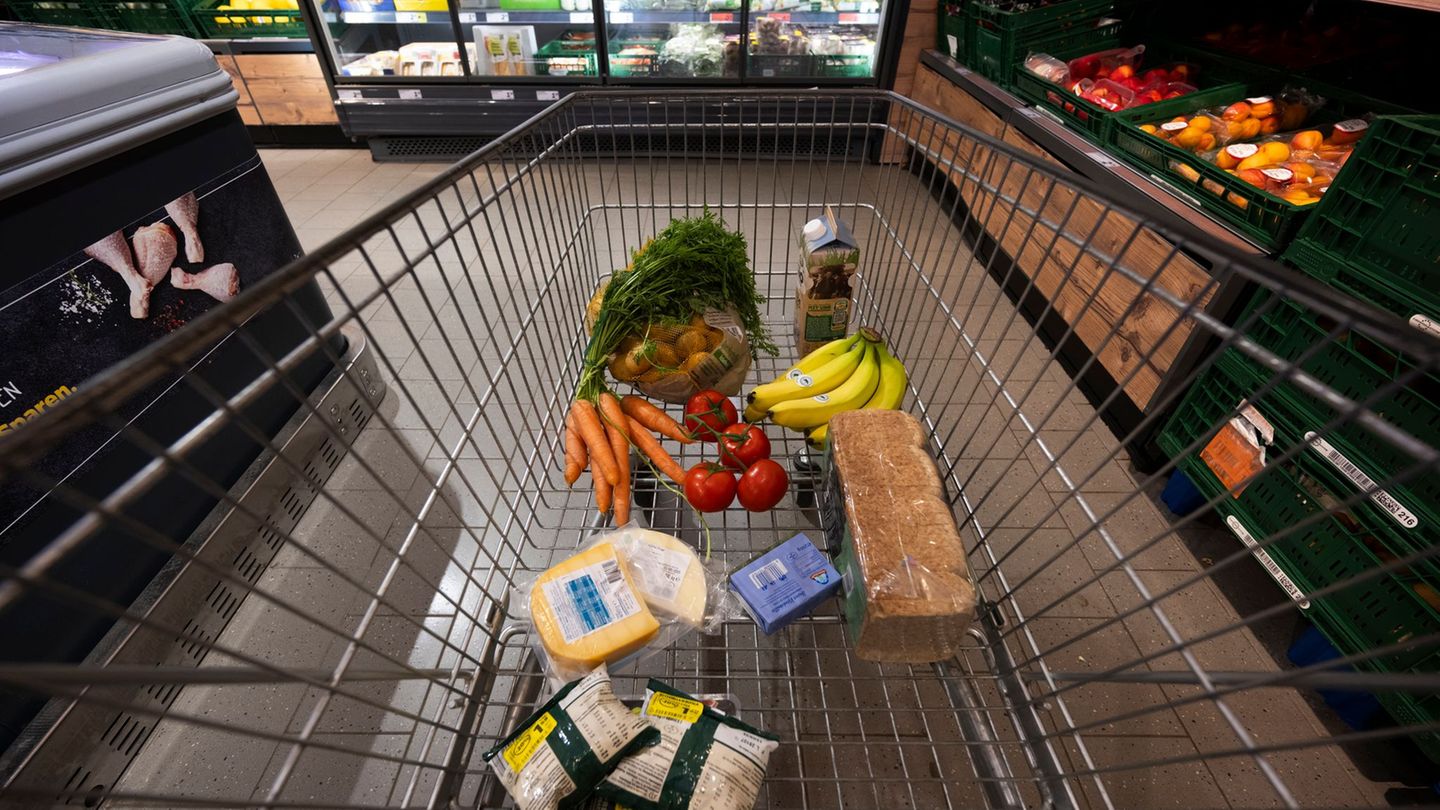Consumer prices
ECB: Food prices stubbornly over pre-corona level
Copy the current link
Add to the memorial list
Butter, milk, meat: Many foods are more than 30 percent more expensive than before corona pandemic. Why this could stay that way according to the ECB.
Increased food prices have been preventing the inflation rate for months – both in Germany and in the euro area. “Food prices remain stubborn – a third higher than before the pandemic,” write economists from the European Central Bank (ECB) with a view to the currency area.
Food prices have “increased somewhat more than other prices since the introduction of the euro in 1999,” says an analysis published by the central bank. “However, the gap that has been created since 2022 is clearly exceptional and persistent.”
Sometimes price jumps of more than 50 percent
The prices for beef, poultry and pork are now more than 30 percent above the level from the end of 2019, the year before the outbreak of corona pandemic. Since then, milk prices have increased by around 40 percent, butter prices by around 50 percent. Coffee, olive oil, cocoa and chocolate have made even more expensive.
In the countries of the euro currency area, food prices have risen from 20 percent in Cyprus in Estonia since the end of 2019. According to the information, it is 37 percent in Germany.
Wave of inflation – but it doesn’t feel that way for households
After the Russian attack war against Ukraine in February 2022, the prices for energy, but also for food, rose rapidly. In the euro area, the inflation rate climbed over ten percent.
The large wave of inflation has expired: in August 2025, consumer prices in the euro area were 2.0 percent above the level of the same month as in the two previous months. This corresponds exactly to the ECB goal, the most important task of which is to ensure a stable euro and thus maintain the purchasing power of the people. The central bank reaches its goal of stable prices in the medium term with an inflation rate of 2.0 percent in the currency area of the currently 20 countries with the shared currency.
“Overall, we are in a better situation,” write the authors of the ECB. “However, it doesn’t feel that way for many households. When people go to the supermarket, quite a few of them feel poorer than before the inflation boost that followed the pandemic.”
Some prices will probably no longer drop
After the Corona pandemic, the food price inflation in the euro area had to be started a little later than the overall inflation, the experts explain. With more than 15 percent at the top, she also reached a much higher level and takes longer to normalize.
However, consumers have to put up with higher prices in the long run. For example, “the global price increases for food raw materials, some of which have been related to climate change, have contributed significantly to the fact that food inflation has increased again,” as the authors execute. Dürren and floods can significantly disrupt supply chains. “With a view to the future, the effects of structural trends such as climate change will most likely increase,” says the analysis.
After all, the latest ECB forecasts overall can be expected to relax in total: after 2.1 percent inflation in the euro area in the current year, the central bank is running out of 1.7 percent of inflation for 2026.
dpa
Source: Stern




